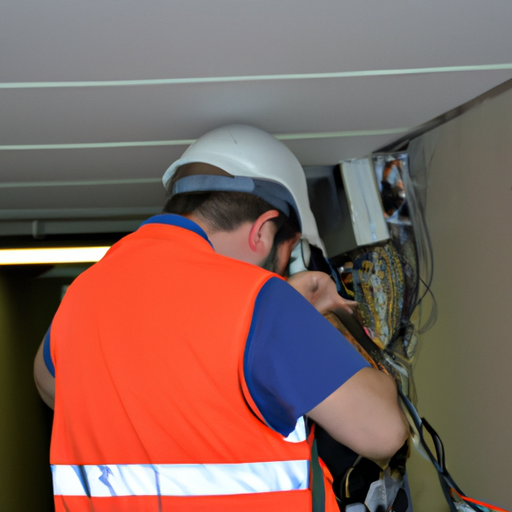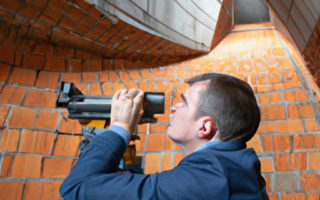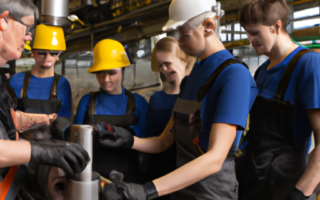Common Areas Requiring Regular Inspections
Regular inspections of common areas are essential for maintaining the safety, cleanliness, and functionality of any property. Common areas, such as hallways, stairwells, parking lots, and recreation areas, require frequent inspections to identify and address potential issues promptly. Conducting these inspections effectively is crucial in preventing accidents, minimizing liability, and keeping the property in optimal condition.
One common area that requires regular inspections is the hallway. Inspecting hallways involves checking for any signs of damage, such as loose handrails, broken tiles, or damaged lighting fixtures. Additionally, inspecting the floor for any tripping hazards, like loose carpets or wet surfaces, is crucial to prevent slips and falls. To ensure thorough and effective inspections, it is advisable to follow a systematic approach that covers all areas, including corners and alcoves that may be easily overlooked.
Stairwells are another key area that necessitates regular inspections. It is essential to check the condition of stair treads, handrails, and lighting to ensure safe and secure passage for tenants and visitors. Inspecting the integrity of the steps and handrails helps identify any wear and tear, loose components, or potential hazards that may cause accidents. Regular inspections should also include checking for obstructions or any objects that may have been left on the stairs, as these can pose significant risks if unnoticed.
Parking lots are also common areas that require regular inspections to ensure functionality and safety. During inspections, it is important to check for proper signage, clear markings, and functioning lighting. Inspecting the surface for any potholes, cracks, or potential tripping hazards is crucial for preventing accidents and damage to vehicles. Additionally, ensuring that the parking lot is free from debris or any obstructions helps maintain a clean and organized environment.
Lastly, recreation areas, such as playgrounds or common outdoor spaces, should be inspected regularly to ensure the safety of residents, especially children. Inspecting playground equipment for any signs of wear, damage, or loose components is crucial to prevent injuries. Checking the condition of fences, gates, and surfacing materials, such as rubber mulch or artificial turf, is also important to maintain a safe recreational environment.
To conduct inspections effectively, it is recommended to create a checklist that covers all necessary areas and tasks specific to the property. This checklist should outline the frequency of inspections, assign responsibility to qualified personnel, and include steps to be taken if any issues are identified. Utilizing technology, such as inspection management software or mobile apps, can streamline the inspection process, enable efficient documentation, and facilitate communication among property management teams.
In conclusion, regular inspections of common areas are vital for maintaining the safety, cleanliness, and functionality of any property. Key areas requiring inspections include hallways, stairwells, parking lots, and recreation areas. Conducting inspections effectively involves following a systematic approach, utilizing checklists, and employing technology to streamline the process. By conducting regular and thorough inspections, property managers can identify and address potential issues promptly, ensuring a safe and pleasant environment for residents and visitors.
Effective Practices for Conducting Inspections
Regular inspections are an essential aspect of maintaining the safety and efficiency of any building or facility. However, it can be easy to overlook certain areas that require regular inspections. In this article, we will explore some common areas that need to be inspected regularly and discuss effective practices for conducting inspections.
Elevators and Escalators
Elevators and escalators are high-traffic areas that require regular inspections to ensure their safe and smooth operation. Inspectors should check for any signs of wear and tear, such as damaged handrails or unusual noises during operation. Additionally, they should test emergency buttons, alarms, and safety features to ensure they are working correctly.
Fire Safety Systems
Fire safety systems, including fire alarms, sprinkler systems, and fire extinguishers, must be inspected regularly to ensure their proper functioning in the event of a fire. Inspectors should check for any signs of damage or obstruction, test the alarms and sprinkler systems, and ensure that fire extinguishers are properly charged and accessible.
Electrical Systems
Electrical systems should be inspected regularly to prevent electrical fires and ensure the safety of building occupants. Inspectors should check for any loose or exposed wiring, signs of overheating, and proper functionality of electrical outlets and switches. They should also inspect electrical panels and circuit breakers to ensure they are in good condition.
Plumbing and Water Systems
Inspecting plumbing and water systems is crucial to prevent leaks, water damage, and mold growth. Inspectors should check for any signs of leaks, such as water stains or dripping faucets, and ensure that pipes are properly insulated. They should also test water pressure in different areas of the building and inspect water heaters for any signs of corrosion or malfunctioning.
Structural Integrity
Regular inspections of the building’s structure are necessary to identify any potential issues that could compromise its stability and safety. Inspectors should look for cracks in walls, floors, or ceilings, as well as signs of water damage or pest infestations. They should also inspect the foundation, roof, and windows to ensure they are in good condition.
How to Conduct Effective Inspections
To conduct inspections effectively, it is important to follow some best practices. This includes creating a detailed checklist of areas to inspect, documenting any findings or issues discovered during the inspection, and promptly addressing any maintenance or repair needs. Inspectors should also stay updated on relevant codes and regulations to ensure compliance.
In conclusion, regular inspections of common areas are essential for maintaining the safety and functionality of a building. By conducting inspections effectively and addressing any issues promptly, building owners and facility managers can create a secure and comfortable environment for occupants.



